Data is being used in nearly every facet of society today, and so it should come as no surprise that data is a big part of a modern public relations (PR) businesses’ digital marketing strategy. Gone are the days when PR agencies would be expected to measure column inches to report to a client how much a piece of media coverage is worth!
Today, clients want to see their PR activities generating real business impact, and with a recession now a real possibility, PR agencies will have to get better at justifying where every dollar of the client’s budget is spent.
The best approach is data driven PR, where you make strategic decisions based on factual evidence rather than instinct. Working closely with SEO experts (like we do at partner SEO agency, Online Marketing Gurus – OMG) and analytics tools to demonstrate how this will help to build the client’s brand and expand their digital footprint.
PR plays a unique and important role in building a brand’s profile, and by backing your hard work up with data you’re setting yourself up to become an invaluable asset to your client’s communication team.
The science behind it
Data science methodologies can be utilised in a variety of ways to determine where a client’s brand stands in terms of reputation and internet presence, as well as to assess the effectiveness of public relations campaigns. But what do we mean when we refer to the term “data-driven PR”? In a nutshell, to be data-driven means “data guides one’s decisions”.
Hence, data-driven PR refers to strategies and public relations efforts that use data at their core to evaluate a brand’s performance (also known as analytics), engineer the who, what, when, where, and how behind the initiatives, and harness creativity and knowledge to create compelling narratives, produce ground-breaking campaigns, and tell stories that connect on a personal level.
Based on that, a data strategy should support the traditional art of storytelling while also assisting industry leaders while making decisions in improving and optimising marketing and public relations activities. At Sphere PR, we have selected the top three reasons your company should implement a data-driven PR strategy.
Data-driven coverage leads to stronger media interest
Simply put, the more cohesive elements you have in a campaign, the stronger the media engagement. Incorporating data into your strategy will instantly add that newsworthy sell, especially if the data is the very first of its type – the PR dream!
Data can come from a variety of sources, but the more reliable and reputable, the stronger your coverage is likely to be. In addition, data-driven PR is beneficial since it provides quick access to facts and statistics to journalists and reporters.
The typical reporter works to tight deadlines and is constantly interrupted. A reporter will usually pay more attention to pitches that include good data, even if they have a pile of media releases on their desk.
Data-driven decision-making on PR Initiatives
Collecting data at every stage of the media release process can help to evaluate the effectiveness and limitations of a PR plan. Utilising web analytics tools to gather basic information on how website visitors are using a site and how they arrived there can be extremely beneficial to a brand’s marketing strategy.
Measuring the effectiveness of digital advertising and organic media coverage in terms of actual web traffic driven to the site will help to easily determine the ROI of such strategies. This can be accomplished by incorporating campaign links into content. Content providers can also track traffic to specific organic media placements to see what content is being viewed and what isn’t.
Purchased online advertisements also provide data on how many “impressions” (this is the number of times an advertisement runs on a webpage, whether the targeted individual sees the ad) and actual clicks an advertising campaign has generated or not.
Data-driven PR campaign will add a backbone to the story
Every company should be in the centre of the story, but it is important to note that not everyone will be impassioned about your product. It is crucial to bear in mind who is being targeted and how this will affect the market, as well as the brand’s primary audience.
Whether data-led PR is the right strategy for every campaign depends on the clients and the data they can access. Although it may not always be the greatest solution; when it is, it can provide credibility and legitimacy to the story being told.
Everyone says that reading a book’s last page first is the worst way to read. When it comes to public relations, this isn’t always true. We should consider the end goal, the headline, and the publication they want to achieve. For instance, if you are writing a headline that says, “X per cent of your audience support this,” then running a survey would be a must-have component of the strategy.
Consider your entire PR strategy as your brand’s story. Just like in a book to bring your audiences to the last page, you need to keep them engaged and portray the brand as the main hero, the guiding force behind the story’s success. Therefore, deciding to implement a data-driven PR strategy will give any story a solid foundation, especially if it’s a creative piece that requires something beyond a survey to attract the media’s attention.
Using data-driven PR to understand what the audience wants, what kinds of content journalists and reporters are seeking, and ultimately establish valuable relationships with the target media is a very powerful tool for any brand.

